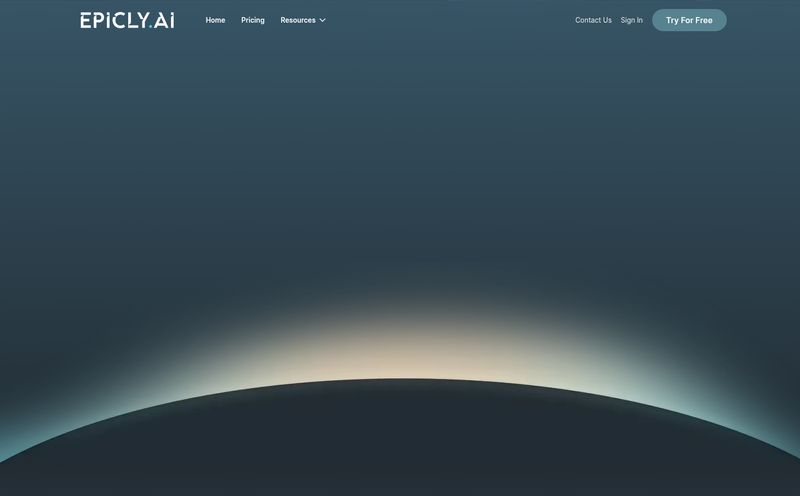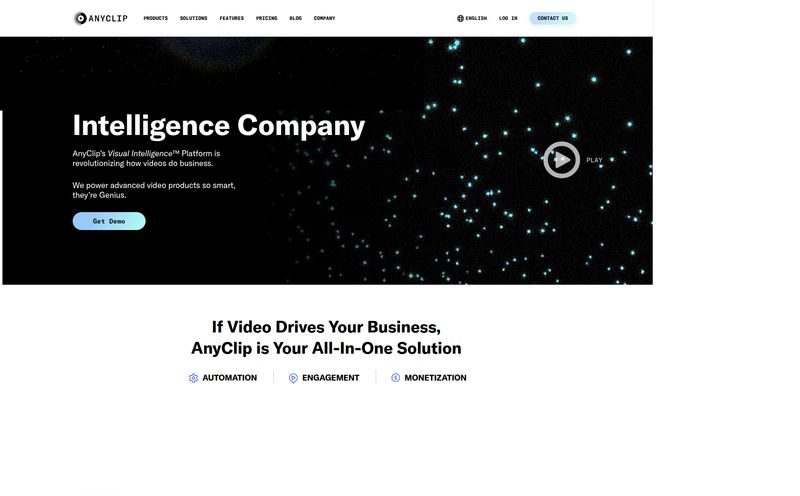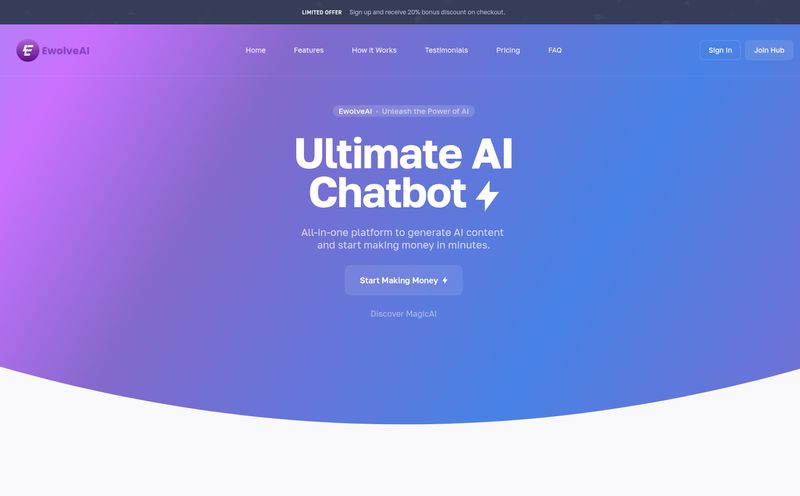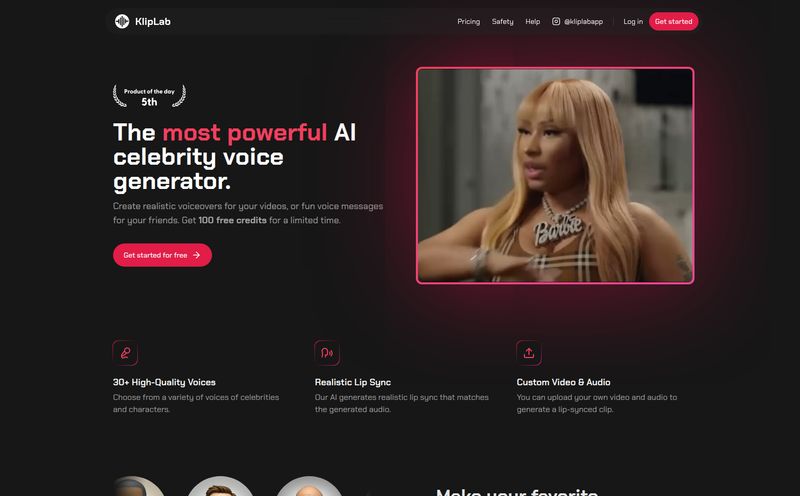If you’re a content creator or a marketer, you’ve probably stared at your YouTube analytics, seen that sliver of traffic from Germany or Japan, and thought, “Man, I should really translate my videos.” And then you remember the cost. The hassle. Finding voice actors, managing scripts in languages you don’t speak, the endless back-and-forth… it’s a logistical and financial nightmare. Most of us just sigh and move on.
I've been in that boat more times than I can count. For years, globalizing video content has been one of those high-effort, high-cost things reserved for big corporations with deep pockets. But the AI wave is changing things. Fast. I've been testing a slew of new AI tools, and honestly, most of them are clunky, over-hyped, or produce results that sound like a robot reading a phone book. But every now and then, you find a gem. Today, I think I’ve found one. It’s called DubWiz, and it’s an AI video dubbing platform that does everything right inside your browser.
So, What's the Big Deal with DubWiz?
In simple terms, DubWiz is a one-stop-shop for turning your single-language video into a multilingual masterpiece. You upload your video, and its AI engine gets to work. It's like having a tiny, hyper-efficient production team at your command. The whole process is built on a few core technologies:
- Speech-to-Text: It first listens to your video and transcribes all the spoken words into a written script.
- Machine Translation: It then takes that script and translates it into your chosen language. And here’s a cool bit for the nerds like me—it offers both classic Neural Machine Translation (NMT) and more advanced Large Language Models (LLMs), giving you options for translation style.
- Text-to-Speech: Finally, it generates a new audio track using a synthetic voice, speaking the translated script.
The best part? It’s all browser-based. No chunky software to download. You just log in and go. For someone who jealously guards their hard drive space, that’s a huge win.

Visit DubWiz
My First Run: Putting DubWiz to the Test
I’m always skeptical, so I grabbed a 5-minute explainer video from one of my old campaigns and threw it into the system. The interface is clean. Refreshingly so. No confusing menus or a million buttons to press. You upload, select your target language (I went with Spanish to start), and let it cook.
The first thing that impressed me was the transcript editor. The initial AI transcription was about 95% accurate, which is pretty standard. But DubWiz lays it all out in a simple timeline editor, making it incredibly easy to hop in and fix the few words it got wrong. You can correct the text, and you can even tweak the timing of sentences. This level of control is huge. You’re not just stuck with whatever the AI spits out. You’re the director.
Then came the translation. I ran it through, and the Spanish version was solid. It was clear the AI wasn't just doing a word-for-word swap. It understood context. And here’s the kicker: it has a feature to automatically remove the original English audio track. It's a small detail, but it saves a massive headache in post-production. It just… works.
The Features That Genuinely Matter
After playing around for a while, a few things really stood out to me as being more than just marketing fluff.
A World of Languages
Supporting over 100 languages is a bold claim, and it’s a powerful one. This isn't just about translating from English to Spanish. We're talking Hindi, Arabic, Japanese, Portuguese... the list goes on. For any business serious about international SEO and tapping into new markets, this is the whole game. Instead of commissioning a dozen different projects, you can manage it all from one dashboard. It turns global expansion from a six-month project into a weekend task.
The Power of the Edit
I can't stress this enough: the Script and Timeline Editor is the hero feature. AI is great, but it's not perfect. It might mishear a brand name or get a bit of jargon wrong. The ability to easily review and correct the transcript and translation before generating the final voiceover is what separates a professional tool from a toy. It means you can ensure 100% accuracy and brand consistency, which is non-negotiable.
Choosing Your Voice
You’re not stuck with one generic AI voice. You can browse and select different voices, which adds a layer of customization. The quality of the neural voices is pretty darn good too. They're miles ahead of the monotone robotic voices of a few years ago. They have inflection, they pause naturally... they sound surprisingly human. While it might not fool everyone in a highly emotional, cinematic piece, for tutorials, corporate videos, and educational content? It’s more than good enough.
Let's Talk About the Price Tag
Alright, this is where the rubber meets the road for most of us. How much does this magic cost? DubWiz has a tiered structure that’s actually quite sensible.
| Plan | Price | Minutes Included | Cost Per Minute | Key Features |
|---|---|---|---|---|
| Free | $0 | 10 | N/A | Watermark on video, No support |
| Start | $10 | 20 | $0.50 | No Watermark, Limited human support |
| Advanced | $20 | 50 | $0.40 | No Watermark, Limited human support |
| PRO | $30 | 110 | $0.27 | No Watermark, Limited human support |
The free plan is perfect for a test drive. You get 10 minutes, which is enough to try it on a short video and see the results for yourself. Just be aware of the watermark. For serious use, you'll want to step up to a paid plan. I think the PRO plan at $30 for 110 minutes offers the best value, bringing the per-minute cost down to a very reasonable $0.27. When you compare that to the hundreds or even thousands of dollars it would cost to hire a studio and voice talent for a single language, the value proposition is pretty clear.
The Reality Check: What's Not So Perfect?
No tool is perfect, and it’s only fair to point out the downsides. For all its strengths, DubWiz has a few areas that could be better.
First, the cost. While it's a bargain compared to traditional methods, if you're a content factory pumping out hours of video every single week, the per-minute costs on the lower tiers can add up. You have to do the math and see if it fits your budget. Second, the 'Limited Human Support' on paid plans is a bit of a yellow flag. When things go wrong, you want to know you can reach a person. I haven't had to use it yet, but it’s something to keep in mind. Finally, that free trial watermark is a bit of a bummer, but hey, they have to get you to upgrade somehow, right?
Final Verdict: Who Should Use DubWiz?
So, who is this for? In my opinion, DubWiz is a fantastic fit for a few key groups:
- YouTubers and Solo Creators: If you want to reach a global audience without breaking the bank, this is your ticket. It's an easy way to multiply your content's reach.
- Small and Medium-Sized Businesses: Perfect for localizing product demos, marketing videos, and training materials for international teams or customers.
- Marketing Agencies: A great tool to have in your arsenal to offer video localization as a service to your clients without massive overhead.
For massive enterprise clients needing broadcast-quality dubbing for a Hollywood film, the nuanced performance of a human actor might still be necessary. But for 90% of the video content being created today? This is a revolutionary step forward. It democratizes video translation, taking it out of the exclusive domain of giant corporations and putting it into the hands of creators everywhere.
Frequently Asked Questions About DubWiz
- Is DubWiz actually free to use?
- Yes, there's a free plan that gives you 10 minutes of dubbing. It's a great way to test the platform, but your final video will have a watermark. You'll need a paid plan to remove it.
- Can I change the translation if the AI gets it wrong?
- Absolutely. DubWiz provides a full script and timeline editor. You have complete control to correct the transcription and translation to ensure it's 100% accurate before the final voiceover is created.
- How many languages can I translate my video into?
- DubWiz supports over 100 languages, making it one of the more comprehensive platforms for reaching a global audience.
- Do the AI voices sound robotic?
- Not like they used to! The platform uses modern Neural Text-to-Speech (TTS) voices, which are much more natural-sounding, with realistic inflections and pacing. They're excellent for instructional and informational content.
- What’s the difference between the NMT and LLM translation options?
- Think of Neural Machine Translation (NMT) as a very smart, literal translator. Large Language Models (LLMs), on the other hand, are better at understanding and recreating context, nuance, and conversational flow. Having both options is a great perk.
- Is using DubWiz better than hiring a human translator?
- It's a trade-off. A human offers creativity and cultural nuance that AI is still learning. DubWiz offers incredible speed, scale, and cost-effectiveness. For most business and marketing content, DubWiz provides an amazing balance of quality and efficiency.
References and Sources
- Information about AI in content creation can be found on sites like Search Engine Journal's AI section.
- All specific product information and pricing details were based on the data available for DubWiz.



